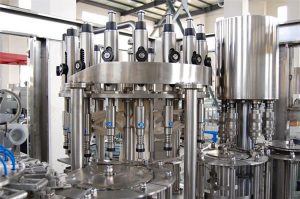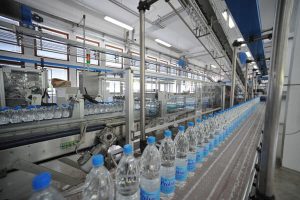Liquid filling machines play a vital role in the packaging industry, ensuring efficiency, accuracy, and speed in production lines. However, like any mechanical system, they are prone to operational challenges that can impact performance. Identifying and addressing these issues promptly can minimize downtime and maintain product quality. Below are some common problems encountered with liquid filling machines and their respective troubleshooting solutions.
1. Inconsistent Filling Volumes
Inconsistent filling levels can lead to product waste, regulatory concerns, and customer dissatisfaction.
Possible Causes:
- Improper machine calibration.
- Worn-out or damaged nozzles.
- Inconsistent liquid pressure.
- Air trapped in the system.
Solutions:
- Regularly check and recalibrate the filling machine to ensure accuracy.
- Inspect and replace damaged nozzles to maintain precision.
- Maintain stable liquid pressure throughout the process.
- Purge air from the system to prevent volume inconsistencies.
2. Machine Not Dispensing Properly
A machine that fails to dispense liquid as required can disrupt production and cause incomplete fills.
Possible Causes:
- Clogged or dirty nozzles.
- Blocked hoses or pipes.
- Faulty valves.
Solutions:
- Clean the nozzles regularly to prevent clogging.
- Inspect hoses and remove any blockages.
- Check and replace faulty valves to restore proper function.

3. Foaming During Filling
Foaming can lead to spills, waste, and uneven fills, especially when handling carbonated or soapy liquids.
Possible Causes:
- High filling speed.
- Incorrect nozzle positioning.
- High product viscosity.
Solutions:
- Reduce the filling speed to minimize foam formation.
- Position the nozzle close to the bottom of the container to reduce air mixing.
- Adjust machine settings based on the viscosity of the liquid.
4. Leaks from the Machine
Leakage not only wastes product but can also damage the machine and create a hazardous work environment.
Possible Causes:
- Loose fittings.
- Worn-out seals or gaskets.
- Overfilled containers.
Solutions:
- Regularly tighten machine fittings to prevent leaks.
- Inspect and replace worn seals and gaskets.
- Ensure proper filling levels to avoid overflows.
5. Slow Production Speed
Reduced speed in the filling process can lead to production delays and inefficiency.
Possible Causes:
- Incorrect machine settings.
- Blockages in the system.
- Worn-out components.
Solutions:·
- Optimize machine settings to achieve maximum efficiency.
- Remove any obstructions in the nozzles, hoses, or valves.
- Replace worn parts to maintain operational speed.
6. Air Bubbles in the Filled Product
Air bubbles in filled containers can compromise product quality and customer satisfaction.
Possible Causes:
- Air trapped in the liquid supply.
- High filling speed.
- Incorrect nozzle placement.
Solutions:
- Purge air from the liquid supply before filling.
- Adjust the filling speed to allow liquid to settle properly.
- Position the nozzle correctly to ensure smooth and even filling.

7. Machine Jams During Operation
Operational jams can halt production, causing costly delays.
Possible Causes:
- Debris or foreign objects in the system.
- Blockages in the filling pathway.
- Mechanical malfunctions.
Solutions:
- Regularly clean the machine to remove contaminants.
- Clear any obstructions in the filling pathway.
- Inspect and replace malfunctioning components as needed.
8. Dripping Nozzles
Dripping nozzles result in product loss and potential contamination.
Possible Causes:
- Worn-out nozzle seals
- Incorrect nozzle shut-off timing
- Residue buildup in the nozzle
Solutions:
- Replace nozzle seals to prevent leaks.
- Adjust shut-off timing for precise flow control.
- Clean nozzles regularly to avoid residue accumulation.
9. Electrical Issues
Electrical failures can cause machine shutdowns and production interruptions.
Possible Causes:
- Faulty wiring
- Power supply issues
- Overloaded circuits
Solutions:
- Inspect and repair any damaged wiring.
- Ensure a stable power supply and replace faulty components.
- Prevent circuit overload by using appropriate power sources.
Preventive Maintenance Tips for Filling Machines
Regular maintenance can prevent many of the issues mentioned above. Here are some best practices:
- Routine Cleaning: Clean nozzles, hoses, and other components daily to prevent buildup.
- Regular Inspections: Check for wear and tear on parts like seals, gaskets, and valves.
- Lubricate Moving Parts: Proper lubrication reduces friction and extends machine life.
- Frequent Calibration: Regularly calibrate the machine to maintain accuracy.
- Timely Parts Replacement: Proactively replace aging components to avoid unexpected breakdowns.
Conclusion
Troubleshooting liquid filling machines requires a proactive approach to identifying and resolving common operational issues. By implementing effective maintenance practices and addressing problems as they arise, manufacturers can optimize production efficiency and ensure consistent product quality.
For advanced solutions and high-quality filling equipment, consider partnering with Datong to enhance your production capabilities and achieve reliable performance.
